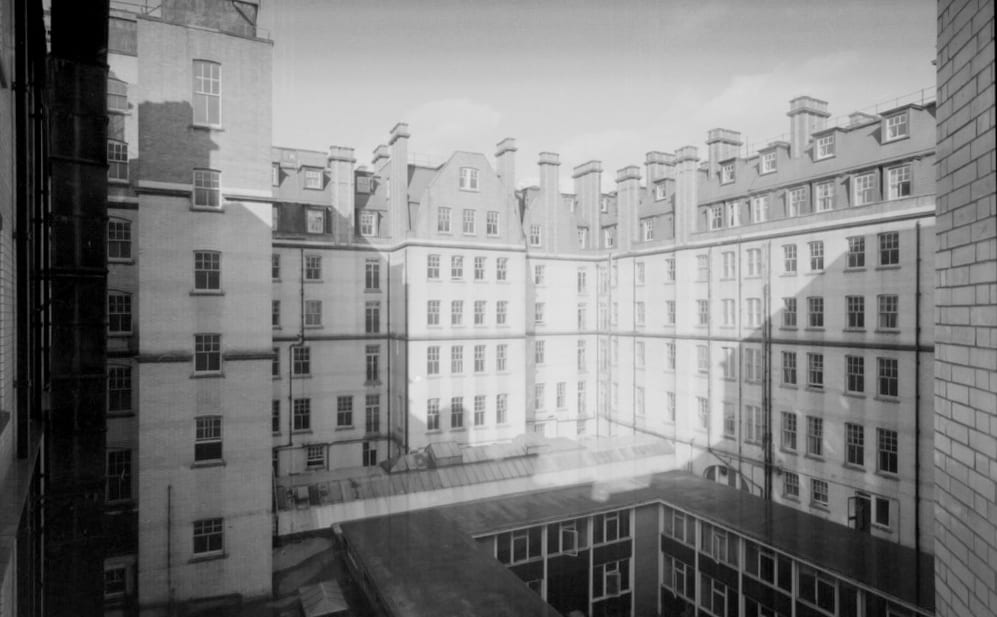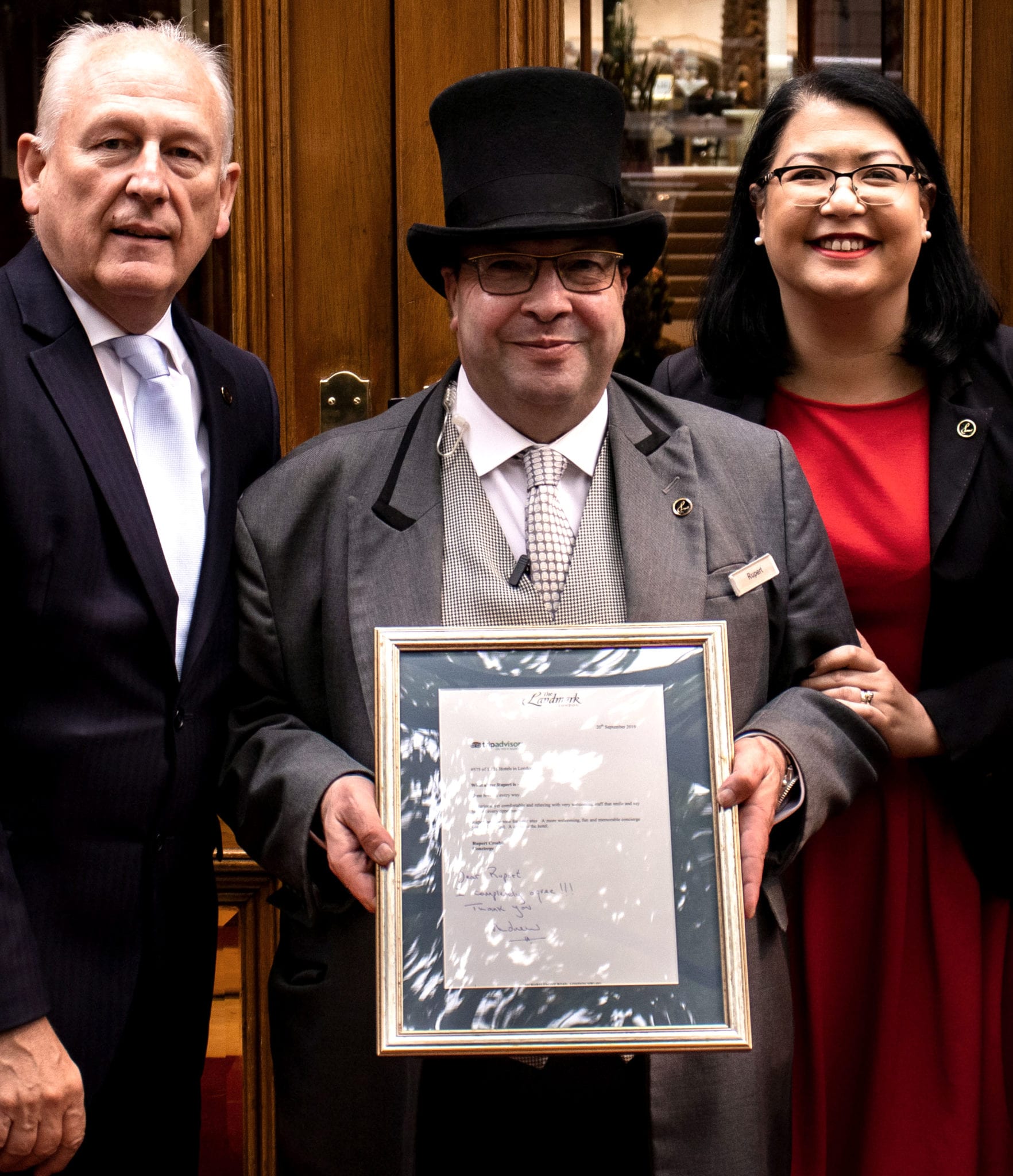From serving as a hospital during World War I to the British Railways Headquarters – 1914-1970
Friday 08th May 2020
World War I & World War II
During World War I, the hotel was used as a hospital for Officers returning from France to convalesce after their operations. One of our lifts by bedrooms ending in 61 is called the stretcher lift as it was built to fit a stretcher into it. Unfortunately, when a person died his body was taken down to what is now our staff restaurant.
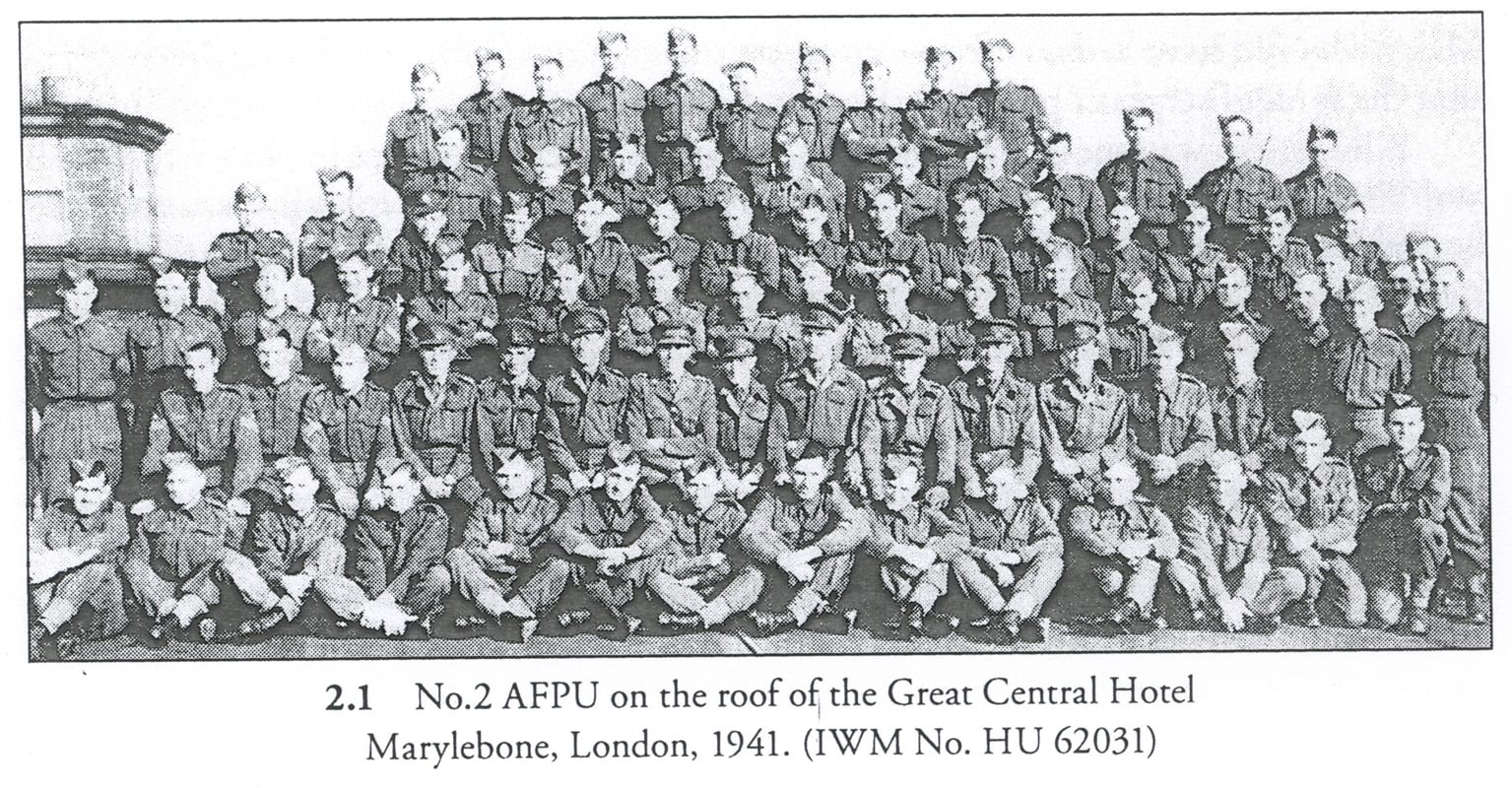
During World War II, the building was the headquarters of the Military Intelligence Section 9. These people were responsible for the de-briefing of men, who escaped from prison camps and Air crew, who had to escape their stricken aircraft and parachute into enemy territory managing to evade capture with the help of The Resistance.
Airey Neave & James Brady: De-briefed men at MI9
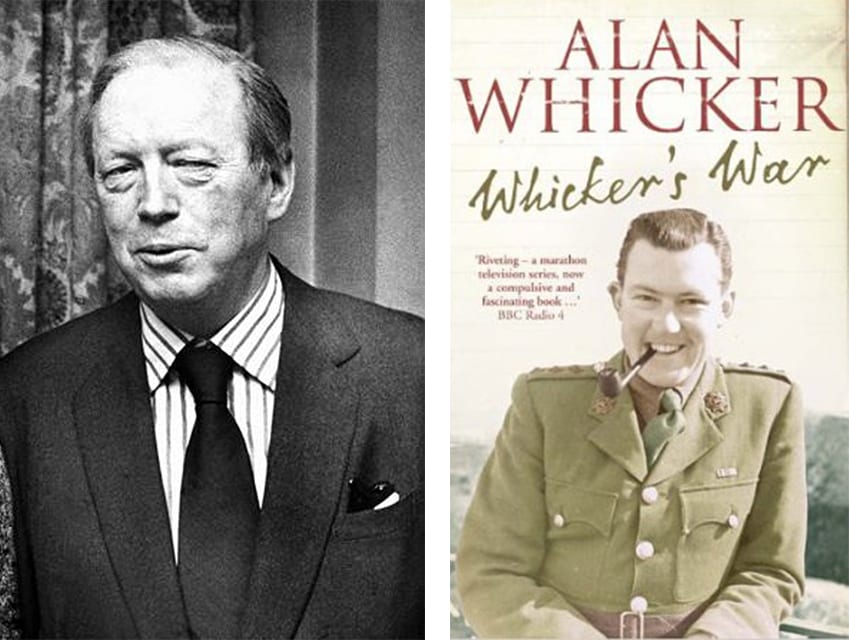
One man that was de-briefed at the hotel was Airey Neave; he was no stranger to the hotel as he had stayed at the hotel on many occasions during his time when he lived in Oxford.
Having missed his last train, he would then sleep at the hotel and have breakfast and then be ready to face the world again.
Airey went on to join the staff of MI9 after the war and he became a leading Conservative MP. He was a big supporter of Margaret Thatcher. After speaking out against the Irish, Airey was assassinated in his car leaving the Houses of Parliament by a group of supporters representing an Irish Terrorist Group. His ambition was for Mrs Thatcher to become Prime Minister, which she did six weeks after his death.
James Brady was another man de-briefed at the hotel, his story was something out of a spy novel. He was arrested in Germany in 1945; he was in the German sector, in a German uniform.
While he was being interrogated, he confessed that had joined the British Army and was taken prisoner and sent to Germany.
Brady, an Irishman by birth had a small regard for the British and in order not to rouse suspicion he learnt many skills whilst he was a prisoner.
Ireland was a neutral country, so Brady and some of his countrymen were released; grabbing the opportunity Brady enlisted in the infamous SS. He served with them until his capture by the British and he was brought back to London.
At first he was sentenced to 15 years but proving that he was a double agent by showing his secret service number on his right upper arm, his sentence was reduced to 3 years and he disappeared
The Headquarters of British Rail
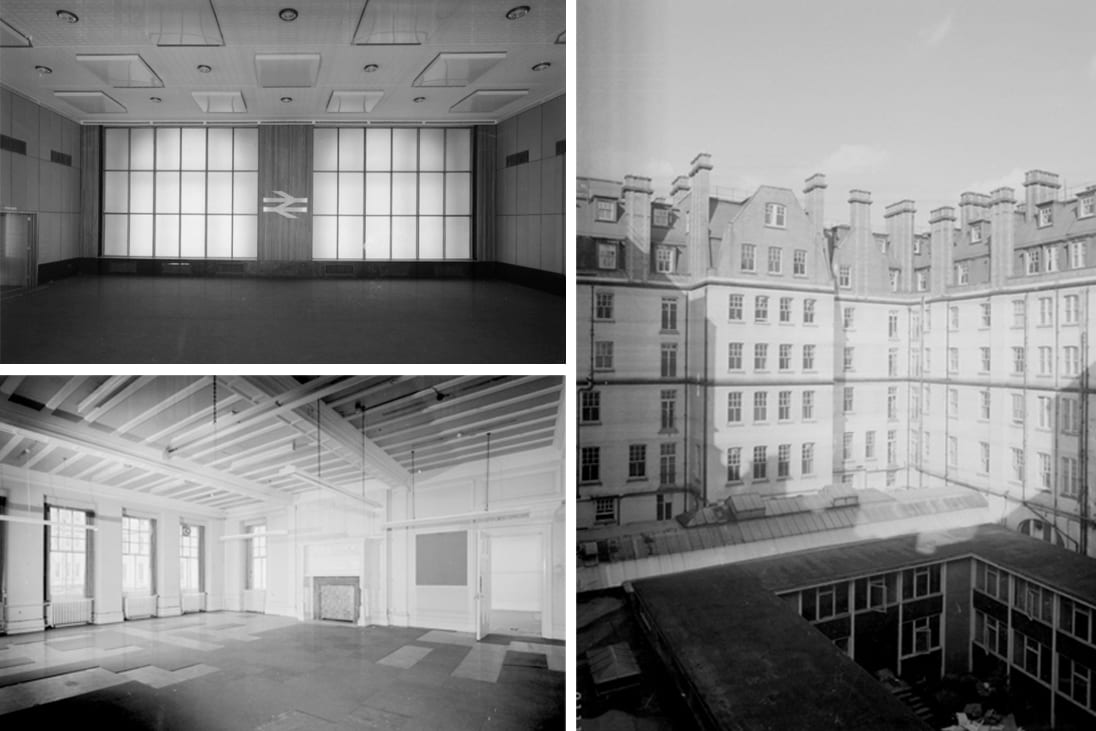
After World War II, the building became the headquarters of British Rail. The employees called the building The Kremlin because it was so exposed and uninviting compared to the splendour of today.
In 1947 architectural maps held at the National Archives show plans for restoration ordered by LNER. Interestingly, what was originally the Billiards Room for gentlemen (now our Great Central Bar and Restaurant) was recorded as the staff dance hall. In 1956 the British Rail, initiated the main conversion work. It was around this time that the central courtyard roof, Edis statement of luxury and grandeur, was removed and the Winter Garden was temporarily open to the elements.
A newspaper article stated that the ballroom was being used as a basketball court. Ex staff of British Rail, now retired, told us that there was a canteen, an officer’s mess and a senior officer’s mess with a bar for meals in what are now our event spaces.

During the First Chapter of our History tour we shared beautiful photos of our marble hall nowadays, below you can see a comparison of the Marble Hall at the time, when it was detached of any sign of opulence, on the left side, and nowadays on the right:
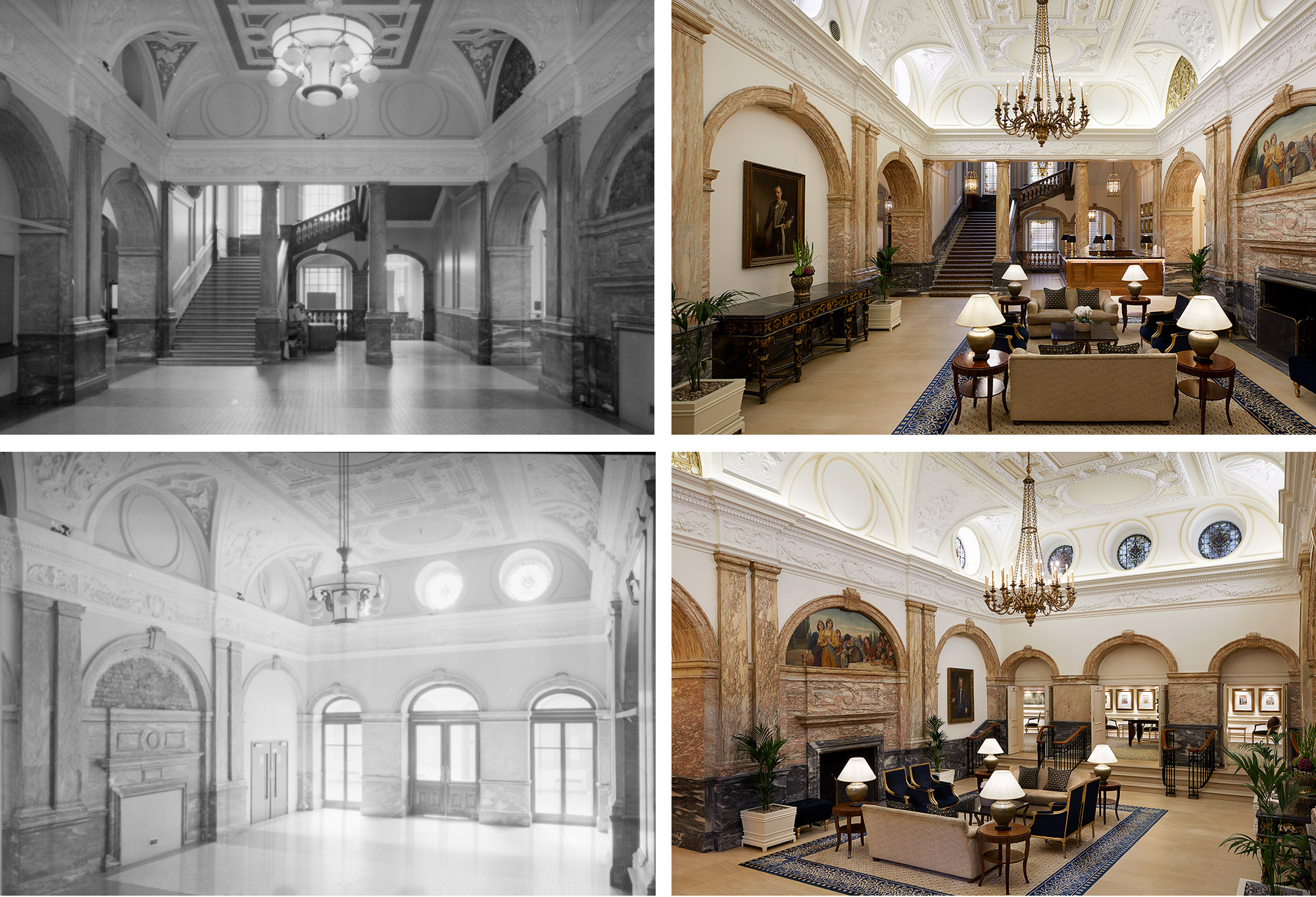
While the hotel was in this format, the infamous Beeching Cuts were executed from the building.
The Beeching Cuts were a cost saving exercise in the early 1960’s, because less people were using the railways. As car ownerships had increased, it resulted in railway lines being closed, leaving whole communities behind and being cut off without transport links.
In the early 1970’s for a brief period, a department was set up with a view to having a Channel Tunnel. This was quickly dispersed because the Government at the time didn’t want England to have such quick access in to Europe, things don’t change or do they?
Are you a history fan?
The third chapter will be online soon with more secrets about our heritage.
Click here if you missed Chapter one
